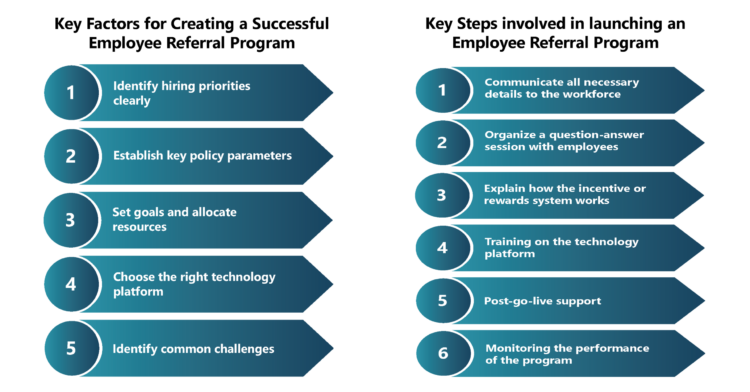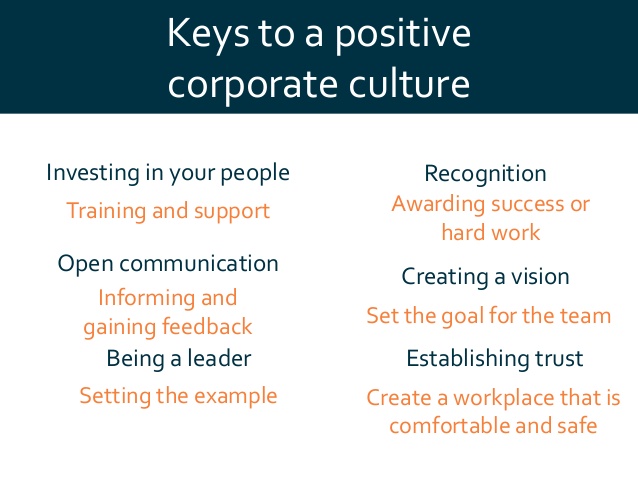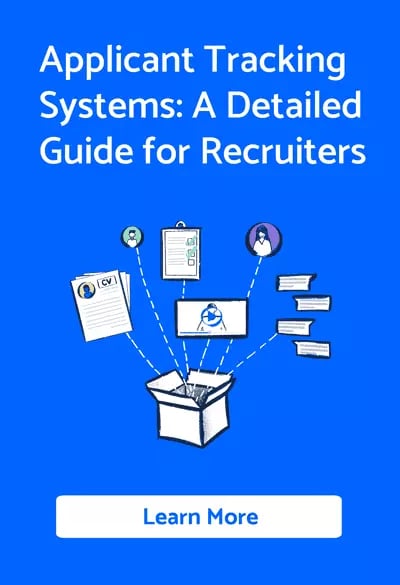Recruiting employees is not easy for small businesses. They have to compete with large enterprises and well-funded start-ups with an enormous budget to spare on recruiting efforts or paying the highest salaries.
So, how to recruit employees for a small business? There are two options:
Option one: You can rush through the recruiting process and choose the candidate you deem the best fit at the last moment. Many small businesses do that but end up with employees who are not the right fit. This will usually end badly and result in the employee leaving meaning that valuable resources are needed to find a replacement.
Option two: You can follow a strategic approach to hiring. This option is more feasible as helps you find qualified candidates, make a competitive offer, and cut costs throughout the recruiting process. Ultimately, you can retain your employees long-term and lead your business towards success.
Does the second option sound great to you? In this simple guide, let's discuss how to hire employees for a small business.
4 simple steps to recruit employees for small business
Step one: Define your hiring needs
The last thing you would want to do as a small business is to hire candidates who are not the right fit for your organisation. It is because hiring unqualified candidates would mean you have wasted your time, effort, and money – and all these are a luxury for small business owners. Hence, defining your hiring needs before recruiting candidates for a position is essential.
While hiring needs may differ from company to company, here are three steps that small businesses can follow to define hiring needs:
1. Define the skills/knowledge your team needs
The goal of hiring new talent is to fill the gap your team is experiencing to meet its goals and achieve success. The only way to find such talent is to ask what skills or talent your team needs to succeed. It gives you an idea of what type of candidates you want to hire and for what positions.
2. Analyse whether your current employees can take on extra responsibilities
Hiring new talent is unnecessary if your current employees can fill the skill gap. But if these extra responsibilities are overwhelming employees, hiring new staff is better.
3. Decide how many employees you want to hire and what type
Hiring employees is a costly business. You need money to recruit, hire, train, and pay new talent. Hence, deciding how many employees you need to fill the skill gap and what type of employees can fill it is crucial.
When it comes to hiring employees, you have three options:
- Hiring full-time staff: Hiring full-time staff is costly, but they're always at your disposal.
- Hiring part-time staff: Part-timers cost less but work less than 30 hours per week.
- Hiring freelancers/independent contractors: They're cheaper but have less commitment towards your business.
The best approach to decide what kind of workers and how many you can afford is to compare projected income vs costs.
The next course of action: Write a catchy job description
Once you have defined your hiring needs, use the gathered information to write a catchy job description that attracts and engages job seekers. It is an essential step in the highly competitive hiring landscape. Especially if you're a small business, job descriptions can be a great chance to create a positive first impression for your business and attract top talent.
Here are a few tips for writing catchy job descriptions to attract top talent as a small business:
- Use a compelling job title that conveys the role and responsibilities of the position you're hiring for. But avoid generic titles like "manager" or "coordinator." Instead, try creating something unique and descriptive that immediately captures the candidate's attention.
- Use a solid opening paragraph that highlights the most critical aspects of the role and what makes it unique or appealing.
- Highlight the benefits of working for your company, such as excellent company culture, opportunities for growth and development, competitive compensation, and salary benefits.
- Avoid jargon or overly technical terms that may confuse or intimidate job seekers. Instead, use simple, easy-to-understand language in your job description.
- Use bullet points to make your job description easy to read.
- Provide specific details about the position, such as the required skills and qualifications, the expected duties and responsibilities, and any specific goals or targets the candidate will be expected to achieve.
- Add some personality to your job description to make it catchy. Give job seekers a sense of your company's culture and values. Use humour, anecdotes or emojis to make your job description more engaging.
- Long, wordy descriptions can be overwhelming and may turn potential candidates off. Hence, keep your job description concise and to the point. It shouldn't have more than 500 words. The more straightforward it is, the better.
Here is a great example:
See also: How to Attract Candidates with a Company Careers Page
Step two: Attract job seekers through promotions
Defining your hiring needs and using the result to craft a compelling job description is only one step in recruiting employees for small businesses. The next action is to promote the job post on multiple channels to increase visibility and attract suitable candidates.
You can also save time and effort in the recruitment process by promoting a job. There's no need to spend hours weeding out unqualified resumes when you can easily reach the right ones through promotions.
Here are a few ways small businesses can employ promote a job post to attract suitable candidates:
Social media and online job boards
Social media and online job boards are among the most cost-effective ways to promote job posts for small business owners. You can leverage platforms like LinkedIn and Twitter to engage potential candidates, promote your company's culture, and expand your network without spending a penny. Even their promotional plans are affordable.
Besides these social media platforms, there are also job board sites like Indeed, where you can easily reach potential clients without breaking a sweat. Millions of job seekers and recruiters are active on these sites. So, you won't face any problem finding the talent you're looking to recruit for your company.
Also read: How to Post a Job on LinkedIn?
Here are a few tips you must follow to use social networking and job posting websites to their maximum potential:
- Create a strong employer brand by showcasing your company's values, culture, and work environment on social media. Regularly share photos, videos, and other content highlighting your brand's unique qualities.
- Use targeted advertising on social media and job board sites to reach the right audience. Narrow your target audience by location, skills, experience, and interests.
- Use relevant hashtags on social media to increase the visibility of your job ads. This way, potential candidates can easily find your posts and apply for the job opening.
- Use social media to interact with potential candidates by promptly responding to comments and messages. It will help you build a relationship with candidates and shows that your company values communication.
- Optimise job listings on job board sites with relevant keywords, clear job descriptions, and attractive visuals. This way, candidates can easily find your job posting and understand the job requirements.
- Use the analytics tools available on social networking channels and job board sites to track the performance of your job postings. This way, you can optimize your strategies for maximum effectiveness.
Use employee referral programs
If you don't have enough budget for job promotions and social media marketing, employee referral programs can be your best bet for recruiting talent. By setting up formal employee referral programs, you can encourage current employees to refer their former coworkers or classmates in exchange for a reward or incentive.
An employee referral program helps employees, job seekers, and employers alike. Employers get a candidate, the employee gets a referral on bonus, and the job seeker gets a job opportunity.
However, here are a few things you must keep in mind to make the most out of employee referral programs:
- Offer your current employees a great work environment. Employees will only refer someone if they're satisfied with their job.
- While everyone wants to earn extra cash, it is best to personalise the referral bonus based on each employee's needs and wants. It shows that you care enough for them to know what they like and don't.

Host job fairs or open houses
Sometimes online promotions don't have the same impact that offline events like a job fair or an open house can have. It is because offline events allow for a personal and meaningful connection between recruiters and candidates, which rarely happens in online promotions. Also, in offline events, recruiters can answer candidate questions, provide information about the company, and evaluate candidates face-to-face.
However, in online promotions, candidates and recruiters only interact on a call or through messaging, which are not always the best ways to assess a candidate. Hence, you should also conduct job fairs and open houses to recruit candidates.
Job fairs or open house sessions also:
- Attract candidates with various backgrounds, skills, and experience levels. This way, you can expand your talent pool and find the best candidates for job openings.
- Help you promote your employer brand and your company's culture, attracting top talent who align with your company's values.
- Create a positive impression of your company, even to candidates who may not make it through hiring.
- Help recruiters streamline their hiring process by screening and interviewing multiple candidates in a single event.
Here are a few tips to help you make the most out of the job fairs and open-house sessions:
- Plan your event to ensure everything runs smoothly and you hire the desired talent.
- Promote on social networking channels and industry-specific websites to attract a wider pool of candidates.
- Prepare informational materials like brochures or flyers to help candidates better understand open positions at your company, your requirements, your company's culture, etc.
- Offer proper training to your recruitment staff that would interact with candidates. They must be prepared to answer all the queries candidates may have.
- Focus on a positive candidate experience so that candidates talk about it even if they don't get a job. The venue must be clean, organised, and welcoming.
- Assist candidates at the venue by offering resume reviews, interviews, or skill assessments. It will help you hire faster and show candidates you care about them.
- Follow up with candidates after the job fair or open house session. Thank them for attending, ask for feedback, or offer additional information about openings you may have in the future. It will help you build a positive relationship with candidates and increase their chances of applying again.
Partner with local colleges or vocational schools
Recent or soon-to-be graduates are the best bet if you want to hire for entry-level positions. It is because they're motivated, enthusiastic, and unshaped by the experiences of working with various employers. Instead, you can shape them by offering training and employment opportunities. They're the talent that can move your company forward.
Hiring fresh talent is also cost-effective as you don't have to engage in heavy promotions and relationship building. Moreover, there's a potential for long-term hires as new candidates strongly commit to their employer and are likely to stay long-term, thus increasing employee turnover. Hence, you should partner with local colleges and vocational schools to hire fresh talent.
Here are a few things to keep in mind while hiring fresh talent from a college or university:
- Look for relevant skills and experience candidates have gathered from internships, as fresh candidates don't have much work experience. Consider their educational background or projects they've worked on and see how they fit in your company's culture.
- Look for qualities like enthusiasm, willingness to learn, a positive attitude, communication skills, problem-solving abilities, and creativity.
- Conduct a thorough interview to assess the candidate. Ask open-ended questions to analyse their problem-solving and critical-thinking skills.
- Ensure that the candidate is not more than an academic performer. find out if they did anything for the local community or participated in organising an event in college. Well-rounded individuals make quality candidates.
- Offer training, support, mentorship, coaching, and professional development opportunities to help them grow.
- Set clear expectations about their responsibilities and the perks they will get.
- Offer competitive compensation to attract and retain top talent.
Step three: Screen and select candidates
Once you have created and promoted a job post and received applicants' responses, the next step is to screen and select candidates. It is an essential step because interviewing candidates for the interview is a costly endeavour, and the company may not have the time and resources to call each candidate for a personal interview.
By screening and selecting candidates, you can:
- Reduce hiring costs by recruiting the best candidates faster.
- Increase the likelihood of choosing candidates who stay committed to your organisation long-term.
- Improve your organisation's performance by selecting candidates who're the right fit.
Here are the phases involved in the process of screening and selecting candidates:
Phase one: Resume and application review
This step involves scanning each candidate's resume and job applications and rejecting job applications and resumes that don't match the job requirements. In the past, recruiters used to do this manually.
However, many large and small businesses nowadays use applicant tracking systems like Gohire to save time and effort. These applicant tracking systems automate the process of resume scanning and rejection, thus saving teams from the worry of reviewing resumes manually.
Phase two: Phone screening
In this step, candidates who have completed the resume and application review phase are called for phone interviews. In this interview process, hiring managers call the candidate to assess their qualifications, experience, and interest in the job. The idea is to determine whether a candidate is a right fit for the organisation.
Recruiters will schedule a personal interview with candidates who make it through the phone screening phase.

Phase three: Personal interview
During the personal interview process of recruitment, the hiring manager meets with candidates for a face-to-face interview to further assess their qualifications and decide if they're the right fit for the job.
A personal interview is an essential phase because your decision to select or reject the candidate will affect the future of your business in the long run. Hence, use it to understand better the candidate's skills, experience, and potential for your hiring position.
Phase four: Background checks
You would not want to hire the wrong candidate after the personal interview process. It is possible that a candidate lied about their work experience or education qualification. That's why you should run background checks on them.
Besides, running background checks on candidates can also help you ensure you don't hire someone with a criminal history, thus protecting your brand reputation and avoiding potential lawsuits.
Ask the candidate to give three references you can contact to enquire about their background. Ensure that the job offer only stands valid after success background check. Even verify the references because sometimes they may not be genuine. The idea is to be vigilant and avoid hiring the wrong candidate than making a bad hiring choice and repenting later.
Once you've evaluated the candidate through all these phases and found serious candidates for the job post, you can move on to the next step, i.e., onboarding and training the new hire.
Step four: Onboarding and training
Onboarding and training new employees are as essential steps as hiring them. It is because every organisation's way of working is different. Equipping them with the necessary knowledge, skills, and understanding of your organisation's code of ethics before they start working on a project is best. It helps them understand and perform their job efficiently.

Here are a few more advantages of onboarding and training:
- Employees feel connected to the new company and role if they have a great onboarding experience. They will feel safe and confident about their work as they will have the necessary knowledge and skills to perform their responsibilities.
- Onboarding can be an excellent opportunity to help employees learn about the organisation and its culture. It helps them feel more motivated and committed to the company's success.
- Onboarding and training also ensures all employees are in the same phase, leading to a consistent experience across the company.
Here's how you can make onboarding and training effective for new employees:
Develop an onboarding plan
An onboarding plan will serve as a blueprint for onboarding and training new joiners faster. It ensures new candidates quickly integrate into the company and adapt to the new role. With an onboarding plan, they can become familiar with the organisation's culture, values, and procedures – thus feeling comfortable and confident in their new position.
Here are a few additional advantages of an onboarding plan:
- Set expectations for new candidates, including their roles, responsibilities, and performance standards.
- Boost productivity by providing new hires with the necessary resources, tools, and training to perform their new role efficiently.
Here's what an onboarding plan should include:
- Pre-boarding activities like sending welcome emails, offering access to online tools and resources, and setting up introduction calls with the manager or team.
- Introduction to the organisation's history, mission, values, and culture. You may also include a presentation video or interactive session with key stakeholders.
- Job-specific training, including on-the-job training, job shadowing, or online training courses.
- An introduction to the company policies and procedures, such as HR policy, IT policy, and safety procedures.
- Meeting with key stakeholders like managers, department leads, and team members.
- Goals and expectations for performance evaluation.
- Regular check-ins with managers, performance feedback, and additional training and development opportunities.
Provide necessary training and resources
New candidates need training to perform their responsibilities efficiently. Otherwise, they'll be clueless about their role and fail to meet expectations. Eventually, the frustration will build up, and they will quit. That's why you must provide the necessary training and resources to employees.
Training and resources will also:
- Help employees become more productive as they would have the necessary knowledge and skills to perform their duties.
- Reduce chances of mistakes and create a safe environment for everyone.
- Increase employee engagement and satisfaction, leading to a high retention rate and a positive workplace culture.
- Ensure each employee works toward the same goals and follows the same processes and procedures to achieve success.
Here are different types of job training you can offer to employees:
- On-the-job training: This type of training is about learning by doing, where new candidates are trained on the job by more experienced colleagues or supervisors. On-the-job training may include shadowing, coaching, or apprenticeships.
- Classroom training involves group training sessions in a classroom or training room. This type of training may include lectures, workshops, or interactive sessions.
- E-learning involves online training courses that employees can complete at their own pace. E-learning courses may include videos, quizzes, and interactive simulations.
- Cross-training involves training employees on different organisational roles or tasks. This training type can help develop a more flexible and versatile workforce.
- Mentoring involves pairing new joiners with more experienced colleagues who can provide guidance, support, and feedback. Mentoring can be formal or informal and may occur in person or virtually.
- Coaching involves providing one-on-one support and guidance to help employees improve their performance and achieve their goals. A supervisor or a dedicated coach within the organisation may take the mantle of a coach.
- Job rotation involves rotating employees through different organizational roles or departments. This training type can help develop a more diverse and well-rounded workforce.
Each type of job training has its advantages and disadvantages. You can combine different training methods to train new candidates to the best of their abilities.
Foster a positive company culture
Onboarding and training can engage and prepare the employee for the new role. But it's a positive company culture that will make them stay and become incredible members of the organisation. Hence, fostering a positive work culture in your organisation is best.
Especially if you're a small business, a positive work culture will help you bring in more talent through word of mouth and employee referrals. Hence, a positive company culture is a must.
Here are a few things you can do to foster a positive company culture:
- Clearly define your organisation's values and integrate them into everything you do.
- Encourage employees to share feedback and actively respond to their concerns. It establishes trust and transparency within the organisation.
- Encourage communication and collaboration to build a sense of community within your organisation.
- Promote work-life balance by offering perks like flexible work arrangements, time off policies, and wellness programs. It makes employees feel that you genuinely care for them.
- Recognise and reward top performers to encourage employees to give their best. It is also a good idea to offer competitive compensation and benefits to ensure employees stay for the long run.
- Help employees grow through skill development workshops and training.
- Promote diversity and inclusion through hiring practices, policies, and programs. Your company should have a place for everyone, regardless of gender, race, or orientation.
These steps help create a positive work environment that fosters employee engagement, satisfaction, and retention.

A few more tips to improve your hiring process as a small business
Here are a few more things you can do to enhance your recruitment process to hire good candidates and avoid a bad hire:
- Ensure that salary offers remain competitive to attract prospective employees for your small business. A candidate would only consider the job opening if you offer at least more than the average salary.
- Highlight your organisation's lifestyle and culture to attract qualified applicants. It is essential because top talent prefers working with companies that care for their people.
- Leverage recruiting software to improve your recruiting strategy. Automating day-to-day tasks can take a lot of load off your hiring team's shoulders.
- Allow remote job candidates to apply for a position if the job can be performed offsite. It is one of the best recruiting strategies that ensure location doesn't become a reason to miss out on the right candidates.
- Take your time and research when writing job descriptions. Treat a job description as a chance to communicate to prospective candidates what you can offer if they join your organisation. If your job ad is unclear, people will not respond to it.
- Post the job ad on niche job boards and social media channels. An effective recruiting strategy is not wasting time and energy on mediums where your potential employees are inactive.
- Provide unique employee perks to attract talented employees for your small business. Most promising applicants want to work with companies that meet their salary expectations, offer a high-quality benefits package, and several other incentives.
- Consistently track and measure your hiring process to ensure you're heading in the right direction. More established companies also follow the same approach to improve employee recruitment.
Conclusion
Hiring candidates is challenging if you're a small business with no budget and dedicated resources. But with the right recruitment strategy, you can quickly nail it and hire the top talent for your organisation. To recap, here's everything you need to do to hire employees for a small business:
-
Define your hiring needs and use the findings to create a compelling job description.
-
Promote job openings across all platforms. You can use various means for job promotion, such as social networking sites and job boards, job fairs and open house sessions, employee referrals, etc.
-
Screen and select candidate applications based on your hiring needs. For this, you must follow an elaborative process involving resume scanning, phone interview, personal interview, background checks, presenting the job offer, etc.
-
Onboard and train new joiners to ensure maximum productivity.
If putting in so much recruitment effort seems daunting, you must consider investing in an applicant tracking system (ATS). ATS software will aid your recruiting efforts by automating the hiring process, from resume screening to client onboarding – saving you time and effort. You can hire qualified candidates faster, reduce recruitment costs, and maximise business productivity.
Gohire can be a great option if you're looking for a reliable and affordable applicant tracking system to ease your hiring process. There are also a few other best ATS software in 2023 listed in this blog if you also want to know about other alternatives.








